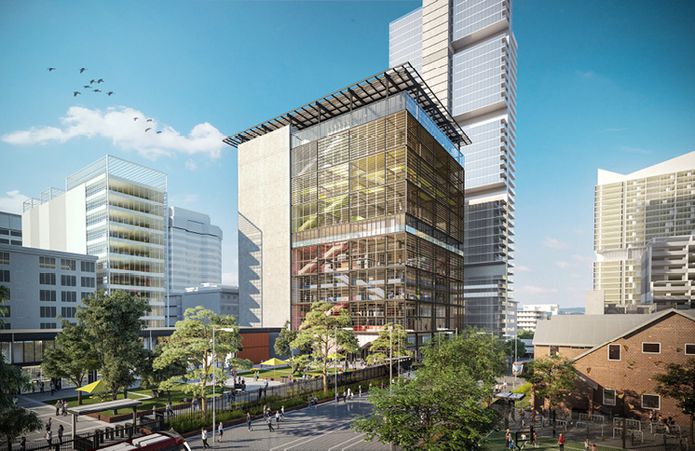Vertical schools on the rise in Australian cities
Growing inner-urban residential populations and land scarcity have created a new typology: the vertical school. These campuses are changing not only the physical teaching and learning space but also the way education is delivered.
Vertical schools are a recent phenomenon in Australian state education. In the 1990s, state governments sold off dozens of underutilized schools, including inner-urban schools, which were often repurposed or rebuilt into apartment developments. Ironically, in the last decade, increases in inner-urban residential populations have led to the need for centrally located schools. Peter Goss from the Grattan Institute wrote that Australia can anticipate an increase of around 650,000 students in the decade to 2026.1 This number would require the construction of seven new twenty-five-student classrooms every day for ten years. High land prices and a scarcity of suitable sites make vertical schools an economic alternative to our longstanding cultural preference for low-rise schools.
A vertical school is designed to accommodate the full range of teaching, administration and recreational activities within one or two buildings, often with outdoor spaces constructed on upper levels. New vertical schools, ranging in height from four to seventeen storeys, are now starting to be commissioned across all Australian mainland states.
Vertical schools have a long history in Europe, Asia and America. The only Australian precedent is St Andrew’s Cathedral School in Sydney, a 1976 eight-storey brutalist design by Noel Bell and Herbert F. Hely in which students occupy the upper three levels and roof. I am writing this article from Sweden, where I pass nineteenth-century four- and five-storey schools every day. Historian Catherine Burke led a 2010 report2 on examples of multistorey primary schools in the UK, including an 1870s five-storey Manchester school and a seven-storey Hackney school from 1898. Burke’s research addressed the question of whether the choice of single or multistorey primary schools affected the quality or delivery of education. The report’s findings are relevant to the Australian context and have helped inform this article.
Read the full article here, Vertical schools on the rise in Australian cities | ArchitectureAU





